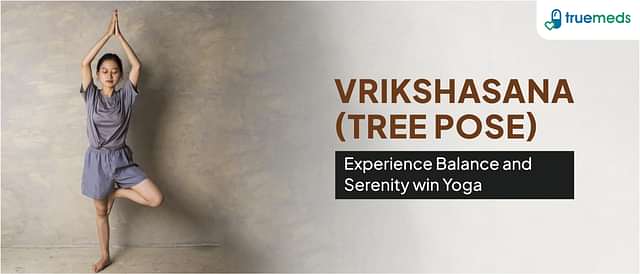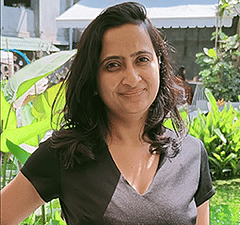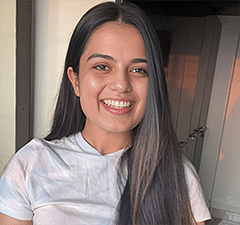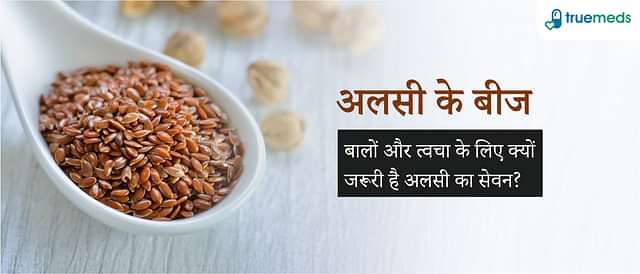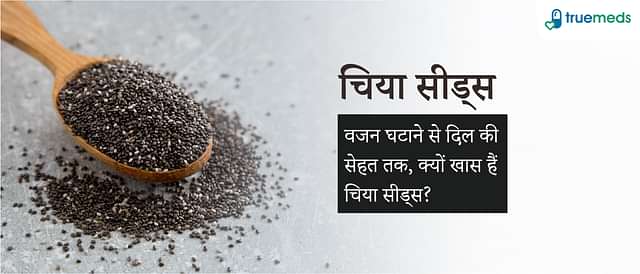Benefits of Shashankasana (Rabbit Pose) and How to Do It
Last updated on : 18 Mar, 2025
Read time : 8 min
Shashankasana, or Rabbit Pose, is a gentle yet powerful yoga posture that offers a wealth of benefits for both the body and mind. This pose, named after the serene moon and the tranquil hare, embodies a sense of calmness and relaxation. By incorporating Shashankasana into your yoga practice, you can experience improved flexibility, enhanced overall well-being, and a profound sense of inner peace. Whether you are an experienced practitioner or new to yoga, this pose can bring about positive changes in your physical and emotional state, making it a valuable addition to your routine.
What is Shashankasana (Rabbit pose)?
Shashankasana is a seated forward bend that combines elements of relaxation and gentle stretching. The name ‘Shashankasana’ is derived from Sanskrit, with ‘Shasha’ meaning hare or rabbit, ‘Ank’ meaning lap, and ‘Asana’ meaning pose. This posture resembles a hare resting in a lap-like position, hence its name. To enter the pose, begin in Vajrasana (Thunderbolt Pose) and then bend forward, stretching the spine and placing the head on the ground. This action stretches the lower back muscles and releases pressure on the spinal discs, promoting overall spinal health and relaxation.
How to Do Shanshankasana?
To perform Shashankasana, follow these steps:
- Begin in Vajrasana by sitting on your heels with your knees, thighs, and ankles together.
- Grasp your heels with the back of your hands facing outward, thumbs on the outer edges of your feet, and fingers on the inner arches.
- Engage your core muscles by lifting your navel in and up towards your spine.
- Round your spine, bringing the crown of your head towards the ground and your forehead towards your knees, tucking your chin.
- Lift your hips and buttocks off your heels, rolling forward until your arms are straight.
- Deepen the pose by pulling on your heels as you inhale and round deeper into the posture. Exhale and bend forward, engaging your core to support the stretch.
- Release the grasp of your heels and come back to a seated position, inhaling as you rise.
Practising Shashankasana regularly can lead to several interesting benefits for your body and mind.
Do you know?
Shashankasana, named after the Sanskrit word for rabbit, symbolises qualities such as alertness, agility, and flexibility. This pose offers numerous benefits, including stimulating the thyroid gland, promoting digestion, and relieving stress and tension. Practising the rabbit pose can also improve spinal flexibility, reduce lower back stiffness, and enhance mental well-being by managing anxiety and reducing fear and despair. Moreover, Shashankasana serves as an excellent counterpose to deep backbends, helping lengthen and stretch the space between the vertebrae, ultimately leading to a healthier spine.
Health Benefits of Shashankasana (Rabbit Pose)
Shashankasana offers a multitude of benefits for both physical and mental well-being. This posture helps release tension from the neck, shoulders, and back, stimulates the thyroid gland, promotes digestion, and alleviates symptoms of depression and insomnia. Let’s explore the various health benefits of Shashankasana in detail.
1. Benefits of Shashankasana for Heart
Practising Shashankasana can contribute significantly to heart health by reducing stress and tension, which are major risk factors for cardiovascular disease. The pose allows for deep exhalation from the solar plexus, calming and easing tension from arteries and veins, thereby promoting a healthy heart. Regular practice can also help decrease blood pressure and enhance overall heart health.
2. Benefits of Shashankasana for Weight Management
Shashankasana supports weight management by improving digestion, which is crucial for metabolism and nutrient absorption. The pose stimulates the digestive system, helping in the secretion of digestive juices and improving the functioning of organs like the stomach, liver, and intestines. Additionally, it helps reduce excess fat in the waist and lower abdomen, contributing to weight loss and maintenance.
3. Benefits of Shashankasana for Sciatica
Shashankasana is advantageous for individuals suffering from sciatica due to its ability to stretch and tone the pelvic muscles and back. The forward bend helps in relieving pressure on the sciatic nerve, reducing pain and discomfort. Regular practice can strengthen the abdominal and back muscles, further reducing symptoms of sciatica.
4. Benefits of Shashankasana for Digestive Disorders
Shashankasana is highly beneficial for digestive health as it compresses the abdomen, stimulating the digestive organs and improving the secretion of digestive juices. This pose helps eliminate toxins, reduces constipation and bloating, and promotes better digestion. Regular practice can cure disorders of the digestive system and maintain overall gut health.
5. Benefits of Shashankasana for Mental Health
Shashankasana has noteworthy benefits for mental well-being. The pose helps manage anxiety, reduce fear and phobia, and alleviate symptoms of depression and insomnia. It promotes mental peace, allowing practitioners to let go of grudges and resentments. The deep forward bend also improves blood flow to the brain, enhancing concentration, focus, and memory power.
6. Benefits of Shashankasana for Diabetes
Practising Shashankasana can be advantageous for individuals with diabetes. The pose stimulates the functions of the thyroid, pituitary, and other glands, which play a crucial role in regulating blood sugar levels. Additionally, it improves digestion and reduces constipation, which are important for maintaining stable blood glucose levels. Regular practice can help control diabetes and promote overall metabolic health.
7. Benefits of Shashankasana Lowering Cholesterol
Although specific direct effects on cholesterol levels are less documented, Shashankasana contributes to overall cardiovascular health, which indirectly helps in maintaining healthy cholesterol levels. The pose reduces stress and promotes digestion, both of which are linked to better lipid profiles. Improved thyroid function also supports metabolism, potentially aiding in cholesterol management.
8. Benefits of Shashankasana for Anger Management
Shashankasana helps in managing anger and stress by promoting relaxation and reducing emotional clutter. The pose encourages introspection and a sense of calm, allowing practitioners to release negative emotions and cultivate a more balanced state of mind. Regular practice can improve emotional regulation and foster a more peaceful disposition.
Risks of Shashankasana
While Shashankasana offers numerous benefits, it is essential to be aware of certain precautions and contraindications to avoid injury or aggravating existing health conditions. Individuals with injuries to the neck, shoulder, arms, back, knees, or ankles should refrain from practising this pose. Similarly, those suffering from spondylitis, vertigo, glaucoma, or slipped discs should avoid Shashankasana. People with high blood pressure should also exercise caution, as the forward bend may lead to an increase in blood pressure. Pregnant women and those during their menstrual cycle should either avoid or practise this pose with extreme care. Additionally, those who have recently undergone surgery to the shoulder or back should wait until fully recovered before attempting Shashankasana. Despite these considerations, the pose can be a valuable addition to one’s yoga practice when performed mindfully and under proper guidance.
Shashankasana is a multifaceted yoga asana that provides several physical, mental, and emotional benefits when practised correctly. By stretching the spine, enhancing digestion, and improving glandular function, this pose can significantly contribute to overall health and well-being. However, we should be mindful of the contraindications and take necessary precautions to prevent adverse effects. With regular practice and proper guidance, individuals can experience increased flexibility, reduced stress, and improved mental clarity. As with any yoga practice, it is essential to listen to one’s body and modify or avoid the pose based on individual health conditions to ensure a safe and beneficial experience. By incorporating Shashankasana into one’s yoga routine, practitioners can enjoy the serene and calming effects it offers, reminiscent of the peaceful symbolism of the moon it represents.
Frequently Asked Questions (FAQs)
Shashankasana is also known as the Rabbit Pose, Hare Pose, Moon Pose or Sasangasana in yoga.
Sasangasana or Shashankasana, helps in relieving stress, improving posture, toning the pelvic muscles, and stimulating the digestive system.
No, Shashankasana and Balasana are not the same. Shashankasana involves a forward bend from a seated position on the knees, while Balasana (Child’s Pose) involves kneeling and bending forward with the head touching the ground.
Shashankasana, or Hare Pose, helps reduce back pain by stretching and strengthening the spine and surrounding muscles, relieving tension and improving flexibility.
Shashankasana lowers mental stress by promoting relaxation through deep breathing and calming the nervous system. Regular practice can lead to better posture and overall emotional well-being.
References
- https://www.theayurveda.org/yoga/yogasana-for-anger-management-sasakasana
- https://wjpr.s3.ap-south-1.amazonaws.com/article_issue/1521165066.pdf
- https://cdnbbsr.s3waas.gov.in/s3kv011a358a349e495ac2b52530f9158b/uploads/2024/02/2024022625.pdf
- https://yoga.ayush.gov.in/WHOCC/Books6/Yoga%20for%20Mental%20Health.pdf
- https://ijip.in/wp-content/uploads/2021/04/18.01.004.20210902.pdf
- https://mis.alagappauniversity.ac.in/siteAdmin/dde-admin/uploads/1/__Diploma_PG%20DIPLOMA_Yoga_426%2013_Scientific%20Approaches%20of%20Yoga_Binder_8979.pdf
- https://journals.sagepub.com/doi/10.1177/2325160314529933
- https://www.ijhsr.org/IJHSR_Vol.5_Issue.4_April2015/27.pdf
Disclaimer
Our healthcare experts have carefully reviewed and compiled the information presented here to ensure accuracy and trustworthiness. It is important to note that this information serves as a general overview of the topic and is for informational purposes only. It is not intended to diagnose, prevent, or cure any health problem. This page does not establish a doctor-patient relationship, nor does it replace the advice or consultation of a registered medical practitioner. We recommend seeking guidance from your registered medical practitioner for any questions or concerns regarding your medical condition.
Popular Articles
Recommended Articles
Recent Articles
Top-Selling Medicines:
...View more
Top-Selling OTC:
...View more
Subscribe
Registered Office Address
Grievance Officer
Download Truemeds

Contact Us
Our customer representative team is available 7 days a week from 9 am - 9 pm.
v3.7.2
Our Payment Partners











